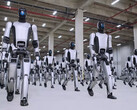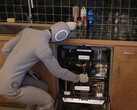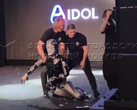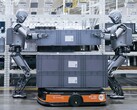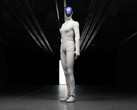China recently made headlines with a viral video showing an "army of humanoid robots". This time, however, the focus is on something considerably more peaceful: the world's largest training centre for humanoid robots, including AI household helpers and industrial robots.
Loading a dishwasher may seem an easy task, but humanoid robots often struggle with the simplest everyday household chores. Handling particularly soft or fragile objects, for example, comes naturally to us humans but is frequently a challenge for a robot's highly complex bionic hands.
Folding a shirt, making a bed or placing flowers in a vase can be highly demanding tasks. So too is grasping delicate objects without crushing them or folding laundry without creasing it. These tasks often push current AI robots to their limits. The new 1X Neo home robot is one example: While it can fold a jumper, the sleeve often slips off in the process. However, the 1X Neo is already capable of handling certain tasks well, such as vacuuming. Those feeling adventurous can pre-order the robot in the USA.
A look inside China's humanoid robot training centre
Located in Beijing's Shijingshan district, China's largest humanoid robot training centre is where these intelligent machines learn everyday skills such as folding towels, grasping medicine boxes and stowing brooms. Mi Sutong from CGTN Digital takes us inside the centre, tries her hand at being a 'data collector', and shows us how the robots 'go to school' to learn practical life skills.
The centre gathers over 10,000 trajectory data points from the robots daily and uses them to train AI models for real-world applications. With the help of their human coaches, the robots perform tasks such as folding a towel. The coaches use remote operation via controllers and VR equipment to control the robots' movements with precision.
Every joint and finger movement is precisely recorded as a numerical code. The AI uses these vast amounts of data to recognise patterns and learn how to perform a task efficiently and flawlessly. Ultimately, the AI model is trained to generate the movements itself. This collected data forms the basis of the robots' autonomous practical intelligence. To take a closer look at the training centre, watch the video below:





